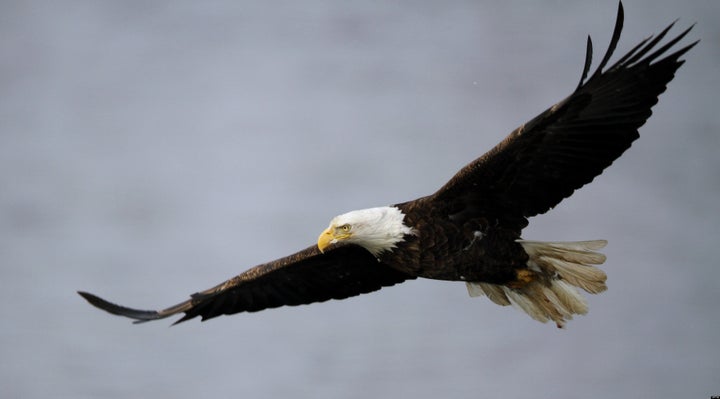
What if the bald eagle had never made it onto the endangered species list in 1967?
Today the eagle would be functionally extinct in the lower 48 states, and one of the most important success stories in American wildlife history would never have been told.
That's just the kind of scenario that could play out for hundreds of other rare and vanishing species in the United States if an Obama administration proposal is enacted. The policy -- first proposed under Bush -- will sharply limit the number of species protected under the Endangered Species Act.
The U.S. Fish and Wildlife Service wants to reinterpret a key provision of the Act to provide protection only to species at risk of being rendered completely extinct in every place where they live -- a dramatic departure from what Congress intended in passing the Act, which is the country's, and arguably the world's, most successful wildlife protection law. The Act now gives species protection simply when they're endangered in "a significant portion of [their] range."
The Obama proposal essentially says: If Species X isn't about to go extinct everywhere it lives, we're not going to protect it. That's a dramatic change from the cautious, science-based approach that's allowing the Endangered Species Act to save and recover so many animals and plants. If the policy goes into effect, it will deny scores of American species the legal protections they need to survive, and many more will wink out of existence.
Had the Bush-Obama policy been in place 40 years ago, the bald eagle never would've been protected, because although the iconic bird was declining rapidly in the lower 48, it was still common in Alaska. So under the policy Mr. Obama wants to put in place now, we would have left bald eagles in the lower 48 on the path to extinction.
The flawed reasoning of the new policy has already been used to deny protection to the cactus ferruginous pygmy owl, which is at grave risk of being lost from the entire Sonoran Desert in Arizona and Mexico.
Last month, Rep. Edward Markey (D-MA), the ranking member on the House Natural Resources Committee, expressed serious concerns about the proposed policy, saying it sets the bar for listing declining species "at much too high a threshold" and is inconsistent with Congress' original intent for the Endangered Species Act.
Markey is right. The policy is being driven by the cynical view that when there are "enough" wolves, grizzly bears or any other species that have marginally viable numbers in small portions of their range, the agency should remove or deny protections and focus resources on the most severely endangered species.
Given limited resources, this might appear reasonable on the surface. But ultimately it's a shortsighted approach that would come at a very high cost: Species in trouble won't get the help they need and will slip toward extinction, and the ecosystems needed to preserve those species will be opened to destruction. The Endangered Species Act -- the most popular, powerful law ever passed to keep plants and animals from vanishing forever -- would be little more than a ghost of its former self. This policy should not be finalized.
